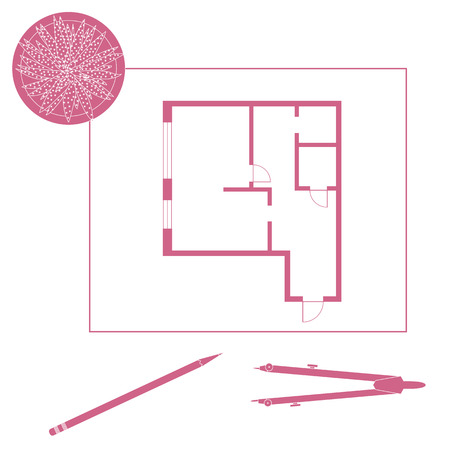Introduction to Feng Shui in the Modern American Workplace
Feng Shui, an ancient Chinese practice focused on harmonizing individuals with their environment, has found its way into many American offices. As companies across the United States look for new ways to boost productivity and support employee well-being, interest in Eastern philosophies like Feng Shui has grown steadily. But what exactly is Feng Shui, and how does it fit into the context of a modern office?
What Is Feng Shui?
At its core, Feng Shui is about arranging spaces to promote positive energy flow (known as “chi”). The idea is that when a workspace feels balanced and welcoming, people are more likely to feel comfortable, focused, and motivated. Key principles include the thoughtful placement of furniture, mindful use of color, and incorporating elements from nature.
Core Feng Shui Principles Adapted for American Offices
| Traditional Principle | Modern Office Adaptation |
|---|---|
| Clear Pathways | Uncluttered walkways and organized desks to encourage easy movement and clear thinking |
| Balance of Elements | Use of wood (plants), metal (modern decor), water features (small fountains), and natural light |
| Command Position | Desks placed facing the entrance or open space instead of having your back to the door |
| Natural Light & Air Flow | Maximizing sunlight and ensuring good ventilation for health and alertness |
| Personalization | Allowing employees to add personal touches like photos or small plants to their workspace |
The Rise of Feng Shui in American Office Design
With changing attitudes toward work-life balance and mental health, U.S. businesses are increasingly interested in holistic approaches to office design. Incorporating Feng Shui principles is seen as a way to create inviting spaces that help reduce stress and improve productivity. Many companies now blend traditional Western design with Eastern philosophies to foster creativity, collaboration, and overall happiness at work.
2. Core Principles of Feng Shui Relevant to Productivity
Understanding Feng Shui in the American Workplace
Feng Shui is an ancient Chinese practice that focuses on arranging spaces to create balance, harmony, and positive energy flow. In modern American offices, adapting core Feng Shui principles can help boost productivity and support employee well-being. Let’s explore how some key concepts can make a real difference in your workplace.
Proper Desk Placement
The position of your desk greatly influences your focus and sense of control at work. Feng Shui recommends the “command position,” which means placing your desk so you face the entrance of the room but are not directly in line with the door. This allows you to see who enters, creating a sense of security and authority. Avoid having your back to doors or windows, as this may lead to distractions or feelings of vulnerability.
Desk Placement Guide
| Desk Position | Impact on Productivity |
|---|---|
| Facing entrance, not directly aligned | Boosts focus, feels empowered |
| Back to door/window | More distractions, less secure |
| Against wall, no view of entrance | Limited awareness, possible stress |
Decluttering for Clarity
A cluttered workspace can overwhelm your mind and reduce efficiency. One of the most practical Feng Shui tips for American offices is regular decluttering. Keep only essential items on your desk and organize supplies in drawers or containers. This creates space for new ideas and helps you stay focused on tasks.
Optimal Lighting
Lighting has a huge impact on both mood and productivity. Natural light is best, so try to position desks near windows when possible. If natural light is limited, use soft white LED bulbs that mimic daylight rather than harsh fluorescent lighting. Good lighting reduces eye strain and energizes employees throughout the day.
Lighting Options Table
| Type of Lighting | Effect on Employees |
|---|---|
| Natural sunlight | Lifts mood, improves alertness |
| Soft white LED bulbs | Mimics daylight, reduces fatigue |
| Fluorescent lights | May cause headaches or stress |
The Use of Natural Elements
Bringing nature into the office is another powerful Feng Shui strategy. Plants, water features, or even artwork depicting nature can enhance calmness and creativity. Popular choices for American offices include snake plants, pothos, or small bamboo arrangements—these require little maintenance but offer big benefits.
Popular Natural Elements for Offices
| Element | Benefit in the Office |
|---|---|
| Plants (e.g., snake plant) | Purifies air, reduces stress |
| Small fountain or aquarium | Adds tranquility, encourages flow of ideas |
| Nature-inspired art or decor | Sparks creativity, adds warmth to space |
By thoughtfully applying these core principles of Feng Shui—desk placement, decluttering, optimal lighting, and natural elements—American offices can create environments where employees feel more energized, focused, and satisfied at work.

3. Cultural Adaptations: Incorporating Feng Shui in American Office Design
As more American companies explore ways to boost productivity and employee well-being, many are turning to Feng Shui for inspiration. However, instead of applying traditional Chinese Feng Shui practices exactly as they are, businesses in the United States often adapt these principles to fit local preferences, workplace cultures, and modern office environments. Let’s look at how these adaptations take shape in practical, aesthetic, and technological ways.
Practical Adjustments for American Offices
American offices tend to be open-plan, tech-driven, and diverse in their design needs. While classic Feng Shui emphasizes room orientation and natural elements, U.S. workplaces often adjust these concepts for greater flexibility. For example:
| Traditional Feng Shui Principle | American Office Adaptation |
|---|---|
| Desk facing the entrance (command position) | Flexible desk arrangements with screens or partitions to create a sense of security |
| Use of water features for energy flow | Incorporating art with water imagery or small desktop fountains rather than large installations |
| Natural light and air flow | Maximizing windows, using adjustable blinds, and adding indoor plants for a fresh feel |
| Avoiding clutter for clear energy paths | Implementing digital organization tools and minimalist décor policies |
Aesthetic Preferences in the U.S. Workplace
The aesthetics of American offices reflect a blend of professionalism and comfort. When bringing Feng Shui into these spaces, companies often focus on subtle touches rather than bold statements. This might mean choosing calming color palettes inspired by nature, adding ergonomic furniture that encourages good posture (a nod to “health chi”), or using artwork that promotes relaxation and creativity without overwhelming the space.
Popular Feng Shui-Inspired Features in American Offices
- Live Plants: Easy-to-care-for greenery like snake plants or pothos bring vitality without requiring much maintenance.
- Soft Lighting: Adjustable LED lighting creates a warm atmosphere that supports focus and well-being.
- Breakout Spaces: Cozy corners with comfortable seating encourage collaboration and relaxation.
- Naturally Themed Décor: Wall murals or photos of landscapes add a sense of calm and openness.
Technological Considerations in Modern Workspaces
The rise of technology has changed how Feng Shui is applied in America’s offices. Since many employees use laptops and mobile devices, it’s not always possible to control desk placement or wiring exactly as traditional Feng Shui suggests. Instead, companies focus on minimizing electronic clutter, using wireless solutions where possible, and creating “tech zones” separate from quiet areas. Some businesses even offer virtual backgrounds with Feng Shui-inspired designs for remote workers.
Simple Tips for Blending Technology with Feng Shui Principles:
- Hide cables with cable management boxes or under-desk trays.
- Add blue light filters to screens for eye comfort and improved sleep quality.
- Designate device-free zones for meetings or relaxation breaks.
- Select calming desktop wallpapers or screensavers with natural themes.
By thoughtfully adapting traditional Feng Shui ideas to suit American office culture—balancing practicality, modern aesthetics, and technological needs—businesses can create environments that foster productivity and support employee well-being while honoring the spirit of this ancient practice.
4. Effects of Feng Shui on Employee Well-being
Research Findings on Feng Shui and Mental Health
Many studies have explored how office design can impact mental health, and Feng Shui principles are increasingly included in this research. For example, a 2021 survey conducted among American tech companies found that employees working in offices with Feng Shui-inspired layouts reported lower stress levels and improved mood. Key features such as natural lighting, uncluttered spaces, and the use of plants were linked to reduced anxiety and higher focus.
Anecdotal Evidence from U.S. Offices
Beyond formal research, numerous American companies have shared their experiences after incorporating Feng Shui into their office design. Employees frequently mention feeling more relaxed and energized throughout the workday. For instance, at a San Francisco marketing firm, staff noticed a significant drop in workplace conflicts and an increase in creative collaboration after making small changes like repositioning desks for better energy flow and adding calming water features.
How Feng Shui Affects Job Satisfaction and Happiness
Job satisfaction is often influenced by the physical environment. When workplaces apply Feng Shui techniques, many employees report greater enjoyment in their daily routines. This is often attributed to a sense of harmony and personal comfort created by thoughtful space planning. Some common improvements include easier communication between team members and a sense of belonging at work.
Main Feng Shui Changes and Their Reported Benefits
| Feng Shui Change | Reported Benefit |
|---|---|
| Addition of indoor plants | Improved air quality, reduced stress, increased happiness |
| Better use of natural light | Enhanced mood, reduced fatigue |
| Decluttering desks & common areas | Mental clarity, less anxiety |
| Rearranging seating for energy flow | Smoother teamwork, fewer conflicts |
| Incorporating calming colors | More positive atmosphere, increased creativity |
The Role of Cultural Adaptation in U.S. Offices
While traditional Feng Shui originates from Chinese culture, its application in American offices often involves adapting these ideas to local preferences. This could mean blending classic Feng Shui elements with modern office aesthetics or prioritizing solutions that fit company values like inclusivity and innovation. The result is a more welcoming environment that supports both mental well-being and productivity for diverse teams.
5. Best Practices and Recommendations for Implementation
Integrating Feng Shui into American Office Spaces
Feng Shui can be a powerful tool to boost productivity and employee well-being in modern American offices. Here are practical steps and suggestions to help organizations incorporate Feng Shui principles effectively while respecting local culture and work styles.
Actionable Tips for Implementing Feng Shui
| Feng Shui Principle | How to Apply in American Offices | Benefits |
|---|---|---|
| Declutter Workspaces | Encourage employees to keep desks organized, provide storage solutions, and schedule regular clean-up days. | Reduces stress, increases focus, supports clear thinking. |
| Optimize Desk Placement | Position desks so employees face the entrance (if possible), or use mirrors if desk movement isn’t feasible. | Promotes a sense of security and control, leading to higher engagement. |
| Incorporate Natural Elements | Add plants, water features, or images of nature to common areas and individual workstations. | Improves air quality, reduces fatigue, boosts creativity. |
| Balance Lighting | Maximize natural light with open blinds; supplement with adjustable LED lamps when needed. | Enhances energy levels, supports mood regulation. |
| Use Calming Colors | Select wall colors and décor in soothing tones like soft blues or greens; avoid harsh reds in high-stress areas. | Creates a peaceful atmosphere, reduces anxiety. |
| Create Collaborative Zones | Designate inviting spaces for teamwork using round tables and comfortable seating arrangements. | Encourages communication and innovation among staff. |
Addressing Common Challenges
- Lack of Awareness: Host short workshops or share informational handouts about Feng Shui’s benefits for productivity and well-being.
- Skepticism: Highlight scientific studies linking environment to performance, and start with small changes to demonstrate impact.
- Limited Budget: Focus on low-cost adjustments like decluttering, rearranging furniture, or adding affordable plants.
- Cultural Sensitivity: Adapt recommendations to fit company values; avoid practices that may feel unfamiliar or uncomfortable for staff.
Real-World Success Stories from Different Industries
- Tech Startups: A Silicon Valley software company added greenery and optimized workstation layouts, reporting a noticeable drop in employee turnover within six months.
- Law Firms: A mid-sized Chicago law office reconfigured their reception area following Feng Shui guidelines. Clients commented on the welcoming atmosphere, and partners observed improved morale among support staff.
- Healthcare Providers: A medical clinic in Texas implemented calming color schemes and natural light enhancements. Staff surveys showed reduced burnout rates after just one quarter.
- Creative Agencies: An advertising agency in New York introduced collaborative spaces with round tables and playful décor inspired by Feng Shui. They saw a spike in client satisfaction scores and creative output during brainstorming sessions.
Your Next Steps
You don’t have to overhaul your entire office at once. Start small—try one or two Feng Shui adjustments and gather feedback from your team. As you see positive results, build momentum by gradually introducing more elements tailored to your unique space and company culture. By making thoughtful changes, you’ll create an environment where people feel energized, valued, and ready to do their best work every day.


